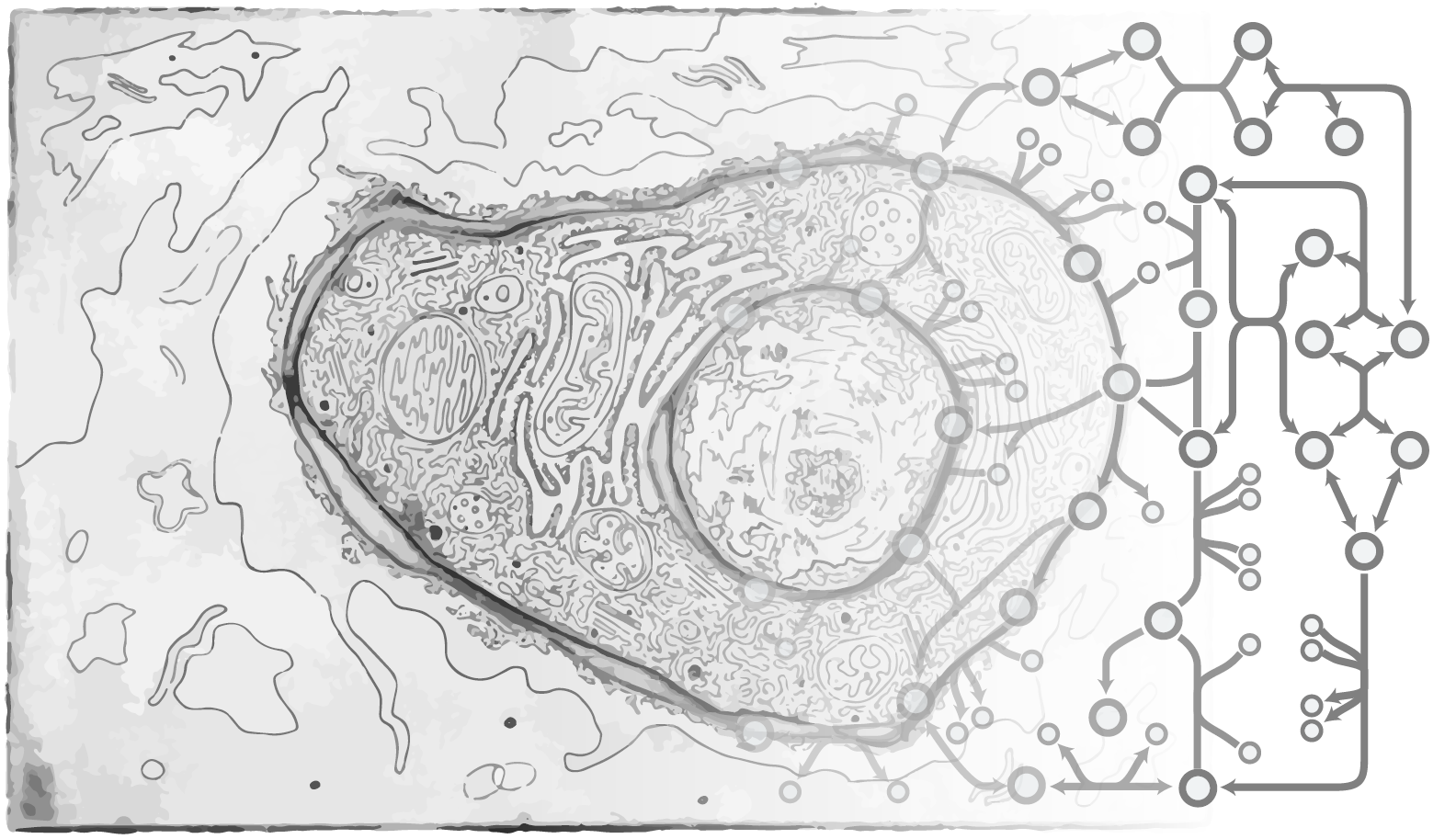No cell is alone. Normal physiology and diseases arise as cell collaborate, collude, and compete. As cells communicate and interact, what are they saying to each other, how do they regulate their communication, and can we harness these processes and signals for therapeutic purposes? Here we develop computational systems biology tools, A.I. and machine learning models, and experimental technologies to study cellular communication, cell-cell interactions, and the molecular processes regulating them, thus shedding light on disease and guiding efforts to engineer cells for therapeutics.
Cell-cell interactions in neurodevelopment, immunology and pediatric health
Many diseases and disorders stem from aberrant cell-cell communication. We use systems biology and machine learning approaches to discover the aberrant signaling seen in autism spectrum disorders (Courchesne, Mol Psychiatry, 2018; Gazestani, Nature Neuroscience 2019; Bao, et al. Molecular Psychiatry, 2022), and algorithms to parse through single cell RNA-seq and multiomics to decipher the cell-cell communication in neurodevelopment and immune cell responses (Armingol, Nature Reviews Genetics, 2021; Armingol, Nature Communications, 2022; Baghdassarian, New England J of Med, 2023; Baghdassarian, Cell Reports Methods, 2024; Armingol, Nat Rev Genetics, 2024).
Systems glycobiology: deciphering sugar-coated communication
Most cell-cell communication involves protein receptors on the plasma membranes and secreted signaling proteins. As these proteins are synthesized in the mammalian secretory pathway, most are decorated with large and complex sugar polymers, or glycans. These carbohydrate chains can have a substantial impact on cell-cell communication, host-pathogen interactions (e.g., SARS-CoV-2 infection, Martino, bioRxiv, 2020), host-microbiome interactions, immune cell functions, and cancer. We deploy computational and experimental techniques to study the physiological importance of glycans, how variations are implicated in pediatric diseases (Autran, Gut, 2017) or cancer (Bao, Nature Communications, 2021), how cells make critical glycans (Kellman, Nature Communications, 2022), or how glycosylation can be engineered to obtain more potent and safer drugs (Spahn, Met Eng, 2016; Liang, Curr Res Biotech, 2020; Thacker, Met Eng, 2022; Chiang, in preparation). In these efforts, we are developing novel systems biology, machine learning, and A.I. techniques (Kellman, Trends Biochem Sci, 2021; Li, Biotech Adv, 2022; Yom, Analytical Chemistry, 2024; Li*, Peralta*, bioRxiv, 2024; Kellman, submitted) and sequencing technologies, and using CRISPR technologies to understand how glycans are regulated (Weiss, Nature Chem Bio, 2021; Weiss, PNAS, 2020).
Engineering of mammalian cell systems for therapeutic production
Ultimately, by deciphering cell-cell communication and its regulation, we hope to develop therapeutics for complex diseases and technologies that can improve the safety, efficacy, and affordability of potent drugs. Thus, we use systems biology and genome editing to engineer cells that are used for the bioproduction of potent drugs and gene therapies. To do this we focus on particular on the secretory pathway (Kuo, Curr Opin Biotech, 2018), which produces most signals and receptors used for cell-cell communication. In particular, to study and engineer the secretory pathway, we using experimental techniques to decipher what regulates protein secreion (Samoudi, Biotech Bioeng, 2021; Masson, bioRxiv, 2022; Masson, bioRxiv, 2023) developing genome-scale computational models of the pathway (Gutierrez, Nature Communications, 2020), novel algorithms for studying the pathway (Kuo, Cell Systems, 2021), and using these to engineer cell factories (Kol, Nature Communications, 2020) or optimize bioproduction (Schinn, Biotech Bioeng, 2021). These are further enhanced when studied and engineered alongside other processes, such as cellular metabolism (Hefzi, Cell Systems, 2016; Richelle, Curr Opin in Sys Bio, 2017; Ha, Biotech Bioeng, 2023; Hefzi, submitted). Through these approaches, better cell factories and biotherapeutics can be manufactured efficiently.
Click on the links below for details on current Research Projects, Resources, and Open Positions.
